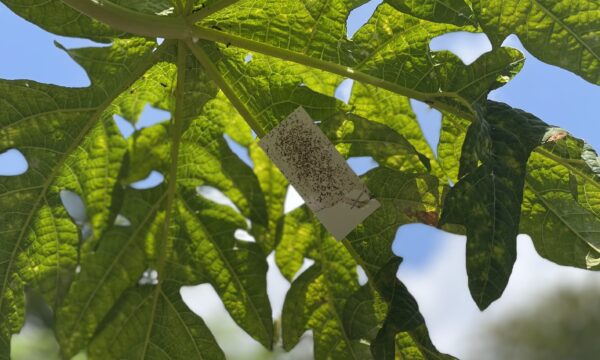In terms of food security the big story recently is that two regions of southern Somalia are in the midst of a famine. More than 10 million people are currently at risk of starvation with 1.8 million people displaced in East Africa’s worst drought for 60 years. Ethiopia and Kenya are neighbouring food insecure populations according to the UN food security classification.
However East Africa may soon experience more food shortages in the future due to yellow rust. Yellow rust (Puccinia striiformis) is a fungal disease which reduces wheat yields and can be found in many countries (Where is yellow rust found?). It causes the formation of necrotic areas and yellow pustules which together form stripes on the leaves. In the past it has not been found to destroy entire crops and was managed by the introduction of yellow rust resistant varieties in the 1970s. Recently a more aggressive strain of yellow rust has appeared and has already affected parts of Europe, Australia and the US. It is able to generate more spores than previous strains and spread more rapidly.
The international community had largely ignored this new strain in its fight against another wheat disease. Ug99 is a strain of stem rust (Puccinia graminis) which was first detected in 1998 and is traditionally regarded as more of a threat than yellow rust in the areas that it exists in (Where is stem rust found?). However this new strain of yellow rust is now considered more of a threat to wheat yields.
Wheat farmers in the tropics are most at risk as their crops only have one gene (Yr27) which is resistant against traditional yellow rust. This is particularly worrying as the new strain has acquired the genes to “beat” Yr27, this could be due to its ability to reproduce sexually. This has only recently been discovered and has large implications as it means that it could have picked up traits from local strains. This also means that new strain has the potential to change again in the near future which is why the collection of data in monitoring plant diseases is so important.
The Plantwise Knowledge Bank collects such data from farmers in the developing world through plant clinics. This is done through “plant doctors”, who diagnose crops brought into plant clinics by local farmers. In doing this we are not only able to provide current data on plant disease distributions, but also record instances of new plant diseases in an area and act as an “early warning system” for the international community.
Whilst we are still learning about this fungal disease there are still ways to reduce its presence. Fungicides can be applied to small outbreaks of the strain, however this can be financially expensive for farmers. In areas where the disease is epidemic it will be necessary to repeat its application which will further increase costs. Depending on the type of fungicide used there may be environmental hazards and if used over a prolonged period of time it may allow the pathogen to develop resistance to the fungicide. The best way is to develop resistant varieties of wheat and then distribute this to farmers in affected areas.
Read more about the effect of yellow rust on the food crisis in Africa with this New Scientist article.
Related News & Blogs
How do pest risk registers address the spread of plant pests in Africa?
Pest risk registers can help to solve problems in agriculture, addressing the growing global threat of plant pests. Moreover, changing weather patterns, led by rising temperatures, are causing them to reproduce faster and expand into new regions. In ad…
10 July 2025





